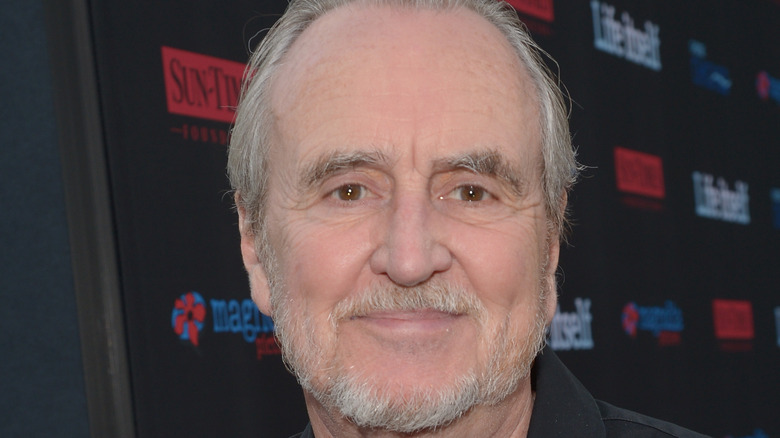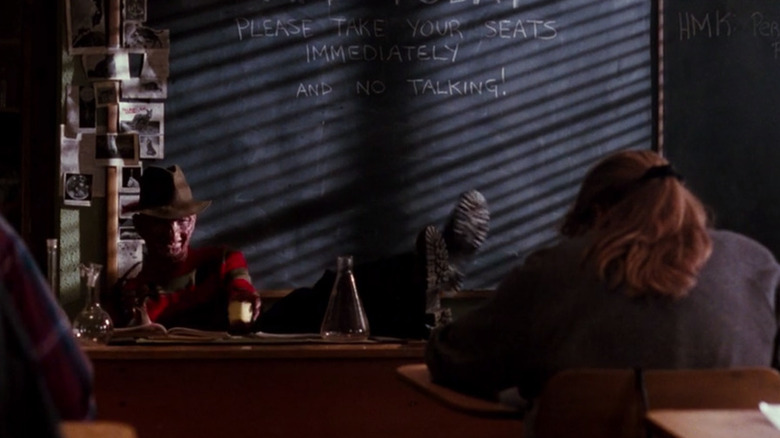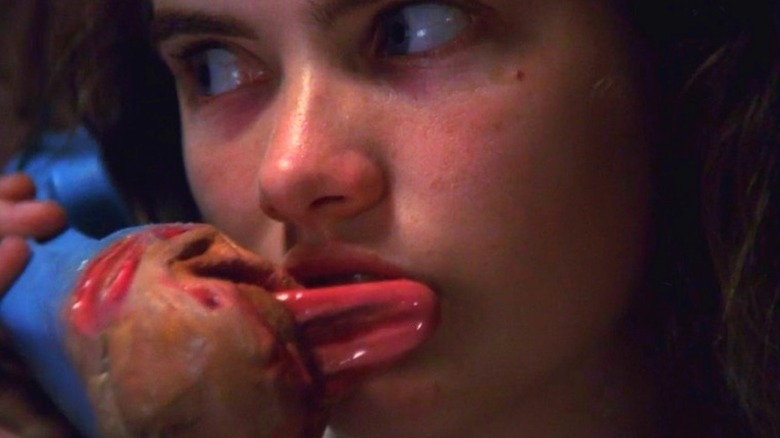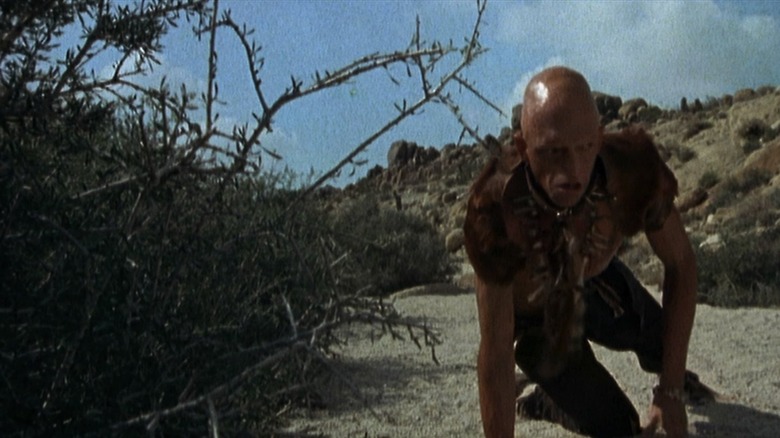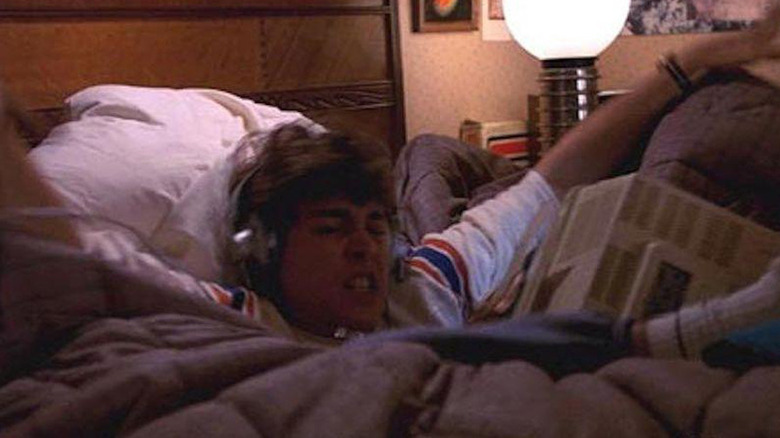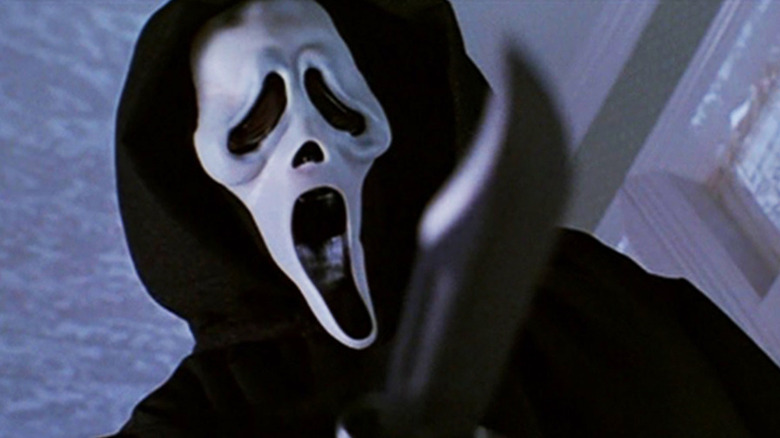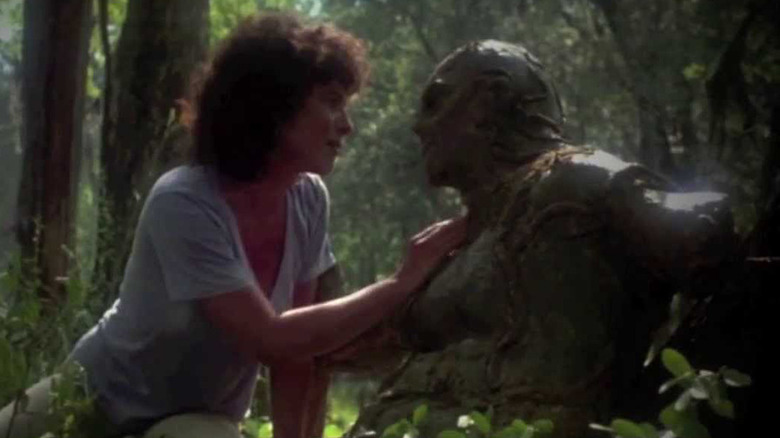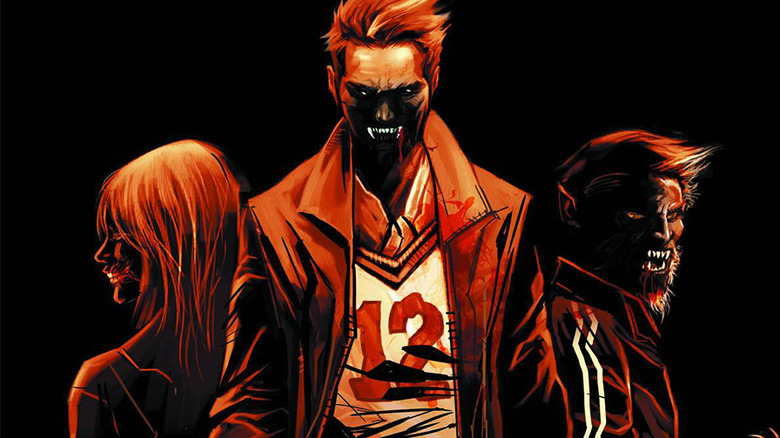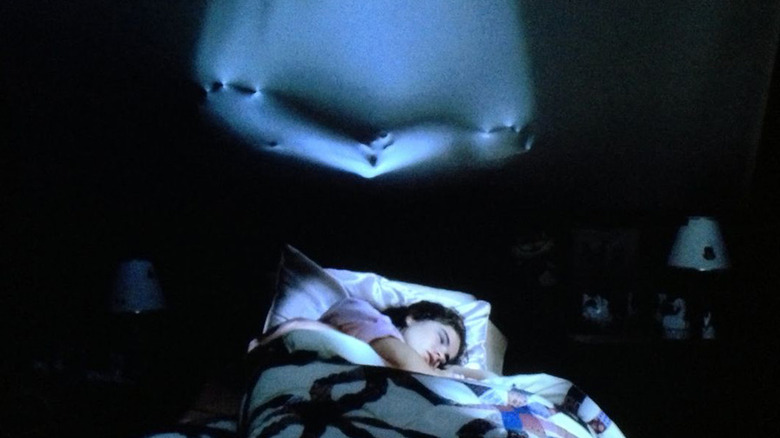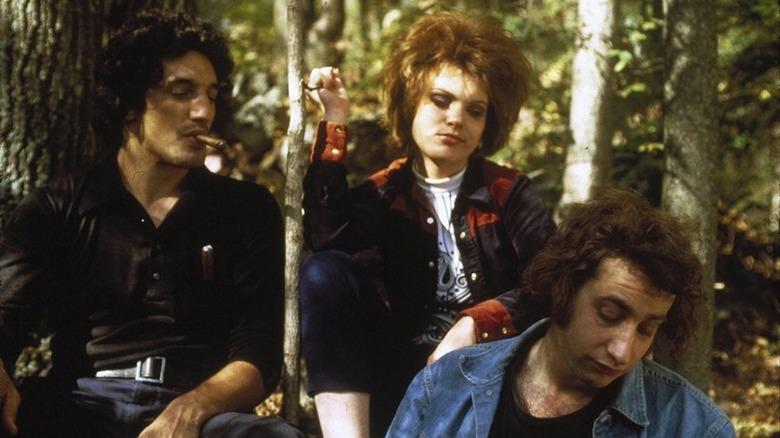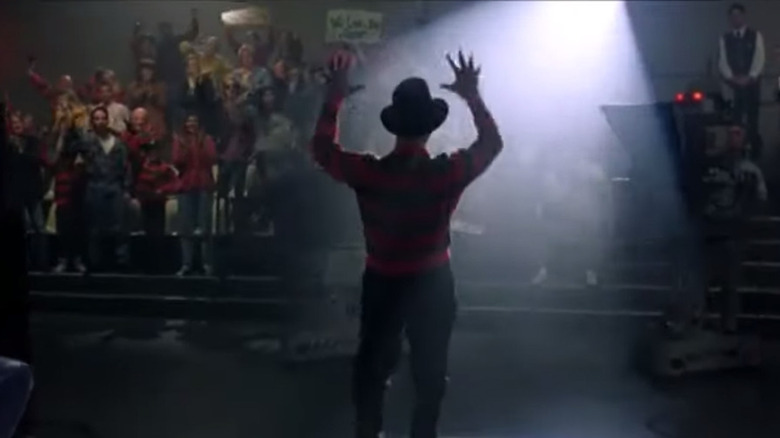The Untold Truth Of Wes Craven
Wes Craven: a name synonymous with not just one film, but an entire cinematic legacy. Craven is best known for being the mastermind behind a true pillar of many '80s kids' nightmares — namely, the main antagonist of the "A Nightmare on Elm Street" franchise, the man of your dreams, Freddy Krueger. There has already been so much written about the production of the first "Elm Street" movie regarding its casting and its special effects. However, we thought it more prudent to examine the man behind the nightmares.
This is because Wes Craven was a truly fascinating individual, with a fitting backstory which informed his creative aspirations. He went from growing up as part of a highly strict Baptist family to being regarded as one of horror cinema's finest minds. The man certainly left behind an indelible impression through his actions and his filmography. After his passing in 2015, many spoke out about their appreciation for Craven and his influence on the genre. It's a kind sentiment we look to replicate today by spotlighting some lesser known facts about the legendary Wes Craven.
He was a professor before becoming a filmmaker
It's not uncommon for some of the biggest names in entertainment to have worked a standard job before becoming famous. From Danny DeVito working as a hairdresser to Martin Scorsese aspiring to be a priest, there are countless examples. But one of the stranger ones would be the future master of nightmares, Wes Craven, working as a college professor. While at university himself, he was intrigued by the fields of philosophy and writing, which would become his focus. After getting his master's degree from Johns Hopkins, he began his tenure as a professor.
However, Craven eventually soured on this career path and look for an exit from the world of academics. This led to film. Already fascinated by the world of cinema, his journey of steady development within the film industry began with him working as a sound editor. This coincided with him becoming entrenched in the often controversial adult film industry.
His career had a raunchy start
Everyone has to get their start somewhere. Wes Craven got his in the 1970s, working on adult films in New York City. He never officially directed any adult films under his own name, but in a documentary titled "Inside Deep Throat," Craven stated that any work he had done was under an ever-changing pseudonym. Referring to a 1975 adult movie called "The Fireworks Woman," Craven told the Village Voice in a 2004 interview, "I might have directed that one. But apart from that one, I didn't make any others." In addition to this alleged early directing credit is the fact that he seemingly made an uncredited onscreen cameo during the movie.
These raunchy affiliations are in stark contrast to Craven's strict upbringing during his childhood. But it would be these early years in the seedy adult entertainment business that prepared Craven for his future artistic calling.
He frequently collaborated with another horror legend
Wes Craven's first official feature as a director was "The Last House on the Left," on which he collaborated with another future horror legend. Sean S. Cunningham would serve as the film's producer, launching his own affiliation with the horror genre. Cunningham is best known for directing the inaugural installment of the "Friday the 13th" franchise. But preceding his biggest hit, Cunningham would take his first dip into the horror genre with Craven and "Last House."
Craven and Cunningham became good friends while Craven was helping Cunningham edit his film "Together." It proved to be such a success that the duo was handed $90,000 to make a horror film. The film boasts a documentary-like feel, maintained by Craven shooting sequences with minimal editing and grisly close-up shots. The movie, as explained in a 2002 documentary titled "It's Only a Movie," was shot very spontaneously, mostly due to a lack of permits. It helps to have good friends in everyday life, but on a chaotic movie shoot, it helps just a little bit more.
He almost ended his horror career early
It's hard to imagine someone as prolific as Wes Craven hanging it up early due to controversy. Unfortunately, with the release of "The Last House on the Left" in 1972, that's almost what happened. Craven directed the film under the assumption that it would only see release in a few select cinemas. This was not uncommon for horror films at the time as many "grindhouse" movies saw only limited releases in small numbers of specialty theaters. It was this assumption that instilled in Craven "the freedom to be outrageous," confident in the film's limited status.
However, that was far from the case. The film's unrelenting violence was witnessed by a substantial audience in an atypically broad release, which made it an easy target for critics and the general public alike. The experience following the release was so unpleasant that Craven chose to distance himself from the horror genre, choosing instead to write comedies and dramas. This hiatus ended when a colleague told Craven about the advantage of filming on location in the Nevada deserts. It served as the motivation for Craven to move forward with "The Hills Have Eyes" in 1977.
He launched Johnny Depp's career
Wes Craven is very much responsible for launching Johnny Depp's career. Today Depp is known for his immersive performances in such films as "Edward Scissorhands" and "Pirates of the Caribbean." But back in the early 1980s, he was another pretty face in the Hollywood system just looking to break through. Wes Craven would hand the fresh-faced talent his big break with "A Nightmare on Elm Street." Depp would be cast as Glenn, Nancy's boyfriend, who serves as one of the teenagers menaced by Freddy Krueger.
Performance-wise Depp is perfectly competent in the role, but it is a definite far cry from his later work. By far the most memorable aspect of his role in the film is how Glenn exits the movie in the third act. Krueger unfortunately catches Glenn asleep and drags him through his bed, leading to a volcanic explosion of blood. It's been regarded as one of the most memorable on-screen kills in horror movie history, and for very good reason. Being slaughtered by a sadistic burn victim might be a morbid career starter, but it's certainly a memorable one.
He almost didn't direct Scream
"Scream" is an important landmark in horror due to its popularization of "meta horror" — horror films that are self aware, where the characters within are aware of the genre's various tropes and cliches. Much of this came from the Kevin Williamson-penned screenplay, which was elevated by Craven's impeccable direction. He is so synonymous with the first film that it's almost impossible to imagine anyone but him at the helm. It might shock you to know that during development, while the film was under the working title "Scary Movie," Craven almost passed on it.
When interviewed on "Inside Story: Scream" for the Biography Channel (via We Minored In Film), Craven was adamant that he had grown disillusioned with horror and the genre's inherent misogyny, questioning whether or not he wanted to continue. His tune changed when a young fan told him, "The movies you've been doing have been getting softer and softer." This was the catalyst that Craven needed to call back Dimension Films and jump on board to direct the project. Some $103 million at the box office, several sequels, and an MTV television series later, Craven's decision definitely paid off.
He directed an early DC comic book adaptation
Long before the modern comic book movie boom, with grand special effects and immense budgets, the genre was a bit barren. While bigger characters, like Batman and Superman, received more quality adaptations, the same cannot be said for more obscure ones. Back during the 1980s, comic book adaptations weren't treated with the same care as they are now.
Wes Craven, for example, wasn't aware of the "Swamp Thing" comics before he signed on to direct their cinematic adaptation. According to Craven, on the commentary track for the 2013 Blu-ray, comic books were forbidden during his childhood. Additionally, a creative choice by Craven did end up complicating shooting when it came to the titular character. Out of costume, he was played by Ray Wise, but post-transformation, he was played by Dick Durock. Craven wanted Wise to be able to emote as Swamp Thing too, so he filmed many scenes with Wise in costume as well. It was determined that the two actors were too dissimilar from each other visually for it to match. The film would not perform well theatrically, but was able to make its money back once released on VHS.
He's created his own comic book
It's ironic that Craven's childhood was bereft of comic books, considering he'd later go on to make one himself. "Coming of Rage" was originally conceived by Craven as a joke that eventually became the logline for the story: "A vampire, a werewolf and a zombie all walk into a bar."
The idea was hatched after Craven met with writer Steve Niles, the scribe behind the "30 Days of Night" graphic novel. The two creatives found common ground with each other, and before long, began the long road to publication. What would eventually hit store shelves in 2015 would end up being a five-issue mini-series from Liquid Comics, in which these three distinct monsters end up as a trio of fugitives. As relayed by Craven in his description of the series, it also showed "how the central character, Ritchie, lost his innocence." Additionally it showed how Ritchie would become "one of the most powerful vampires in the world." "Coming of Rage" is also noteworthy for being Wes Craven's last major project before his passing in August of 2015.
Craven was heavily influenced by the news
Along with the story behind Michael Myers' mask in "Halloween," this is one of horror's most famous origin stories. It's been featured most prominently in the feature-length documentary retrospective, "Never Sleep Again: The Elm Street Legacy."
Craven explains that the inspiration for "A Nightmare on Elm Street" came to him after reading a then-current series of articles published in the LA Times about various young men dying in their sleep. In one case, the victim was adamant to his parents that if he went to sleep again he'd die. Despite his best efforts, he eventually fell asleep and was placed into bed by his parents. Later that night they heard their son violently screaming in his sleep and before they could intervene, he died. Afterwards they discovered numerous unconsumed sleeping pills and a Mr. Coffee machine hidden in his closet.
Craven was fascinated by these events and began conceiving of a creature horrifying enough to kill someone in their sleep. This would be the catalyst that led to the creation of the legendary dream stalker Freddy Krueger.
Several of Craven's films deal with the theme of family
As we've noted, Craven's upbringing played an immense role in his life and creative trajectory. Growing up in a traditional Baptist home deprived him of many things, not the least of which was cinema. From his childhood to even his young adulthood, going to the movies — along with dancing and drinking — was off limits. His college education would expand his views of the world, which only disillusioned him further from his faith. While Craven distanced himself from these strict values, he still wrestled with the ideas instilled in him by them. The concept of the familial environment and the darkness hidden within the family persisted throughout a majority of his diverse filmography.
A key example would be the children paying for the sins of their parents in "A Nightmare on Elm Street." Additionally, in "The Last House on the Left," we see a kind suburban couple turn into vicious killers when their family is attacked. A director's upbringing and worldview can have a profound effect on the execution of that filmmaker's work. For Craven, his upbringing showed him the dangers of repression and trying to shut out the darkness of the world.
Without him New Line Cinema wouldn't exist
Before it produced and distributed acclaimed films like "Seven" and "The Lord of the Rings," New Line Cinema was a miniscule company — so miniscule that, up until the mid-1980s, it was barely a blip on the radar for legitimate filmmakers. This underground status relegated them mainly to the distribution of educational documentary films screened in colleges. That would all change when Craven came to them with an idea for a horror film titled "A Nightmare on Elm Street" — which every major studio had passed on.
Eager to break into legitimate film distribution, New Line Cinema took a chance on Craven and his horror film. This gamble would pay off with the first "Elm Street" movie grossing more than $25 million against a budget of a little over $1 million. This would propel New Line Cinema into the mainstream as a legitimate studio and give the company the nickname "The House That Freddy Built." It's an intriguing "what if" scenario when considering what might have been if they hadn't taken a chance on Craven's idea.
He was an avid birdwatcher
Yes, you read that correctly. The man who conceived of many of horror cinema's most iconic figures and memorable moments was an avid birdwatcher. It's admittedly hard to picture the man who dreamed up Freddy Krueger doing something as quiet and peaceful as birdwatching. Then again, when your nine-to-five job consists of murders, dream killers, desert cannibals and more, it might be best to find solace in a calming hobby
It's a hobby that, once again, has roots in Craven's upbringing, as he and his mother would watch birds. In an interview with Audubon, Craven not only explained his hobby's origin, but explained its presence in his films as well. He noted that the sounds of birds factored heavily into the sound design for "The Last House on the Left." It's very clear from the interview that Craven legitimately loved birds and nature, encouraging younger people to try the hobby as well. This lends credence to the idea that horror master Wes Craven was, at his core, a kind man.
